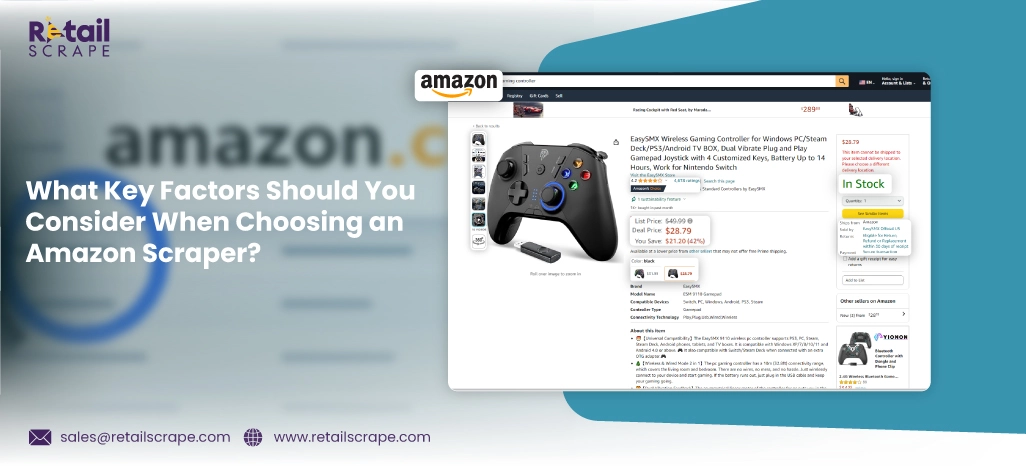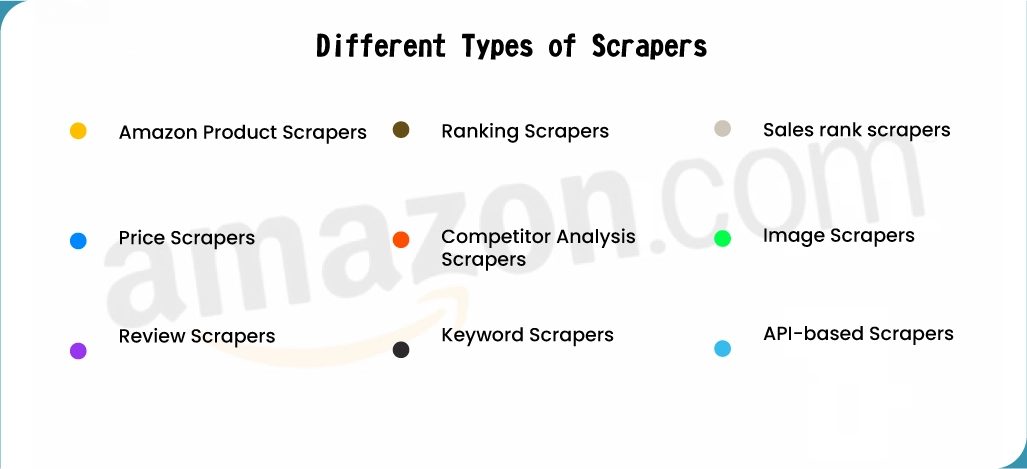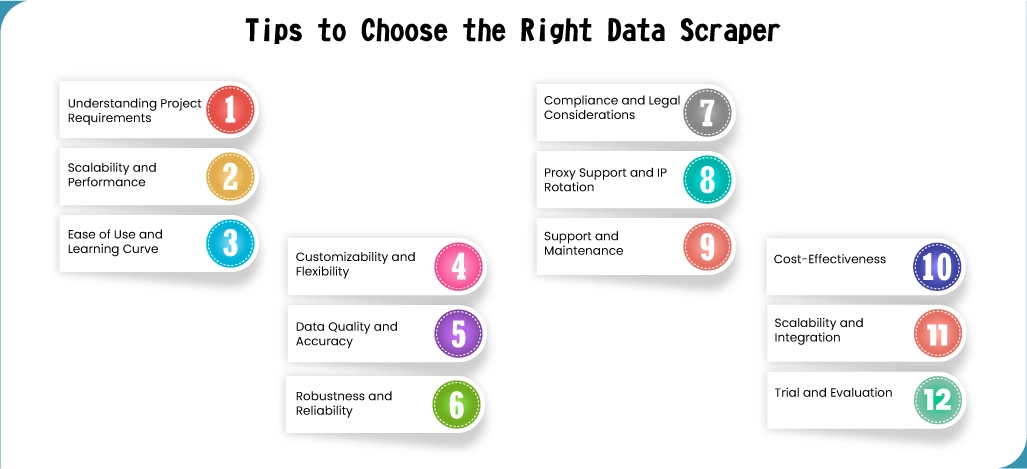
Introduction:
In the current digital landscape, data flow is reaching unprecedented levels, with projections indicating that the volume generated over the next three years will surpass that of the previous three decades. This surge isn't just about quantity; data is also becoming increasingly diverse, sourced from various channels ranging from industrial machinery to social media platforms. Within this data deluge, eCommerce stands out as a thriving sector, attracting businesses worldwide.
E-commerce data scraping has emerged as a pivotal tool for businesses harnessing the wealth of online information. By leveraging Amazon data scraper, businesses can extract valuable insights from various sources, including but not limited to machine data, digital media, and online transactions. This capability is invaluable in today's competitive landscape, where understanding market trends, consumer behavior, and competitor strategies is essential for success.
The exponential growth of e-commerce is undeniable. In 2021 alone, global retail e-commerce sales reached approximately 5.0 trillion US dollars, and projections suggest a staggering 55% increase over the next four years, with the market expected to reach around 6.9 trillion dollars by 2025. This growth presents immense opportunities for businesses, provided they can effectively navigate the complexities of the online marketplace.
One of e-commerce's key advantages is its ability to connect businesses with potential customers on a global scale. Whether through proprietary websites or established platforms like Amazon and eBay, e-commerce offers unprecedented access to diverse consumer markets. However, success in this arena hinges on more than just establishing an online presence; it requires a deep understanding of market dynamics and consumer preferences.
Hence, it is where e-commerce data scraper comes into play. Platforms like Amazon serve as treasure troves of valuable information, offering insights into product trends, competitor strategies, pricing dynamics, and more. By harnessing the power of e-commerce data scraping tools, businesses can gain a competitive edge by making informed decisions based on real-time market intelligence.
Many businesses need help to embrace Amazon data scraping despite the potential benefits due to perceived technological barriers or the need for suitable tools. However, access to advanced technology and data scraping tools has never been more accessible. With the right resources and expertise, businesses of all sizes can leverage e-commerce data scraping to unlock actionable insights and drive growth in the digital marketplace.
Unveiling the Power of Automated Data Scraping
Two decades ago, businesses relied heavily on manual methods such as door-to-door surveys to gather data for analysis and research. This approach was labor-intensive, time-consuming, and costly. However, the technological revolution that has unfolded since then has completely transformed the data collection landscape, making it remarkably more accessible to access information from around the globe.
Among the myriad technologies available for data extraction, automated data scraping is a powerful solution, particularly for platforms like Amazon. An automated Amazon scraper with artificial intelligence (AI) capabilities offers many benefits, including rich features, a user-friendly interface, and intelligent mechanisms that streamline data extraction. By automating the data scraping process, businesses can significantly reduce the time and resources required for data collection, allowing them to allocate their in-house resources more efficiently towards core tasks and strategic initiatives.
The Quest for the Ultimate Amazon Scraper Tool
The proper data scraper ensures efficient and effective data extraction from platforms like Amazon. However, with the multitude of options available in the market, finding the perfect scraping tool can take time and effort. As businesses increasingly rely on data-driven decisions and strategies in eCommerce, the demand for reliable scraping tools has surged.
While numerous Amazon scraper tools are available, only a few have garnered user trust and recognition. These trusted scraping tools are distinguished by their reliability, robust features, and user-friendly interfaces, making them indispensable assets for businesses seeking to extract valuable insights from Amazon's vast troves of data.
In today's highly competitive eCommerce landscape, having access to accurate and timely data is essential for gaining a competitive edge. Trusted Amazon scraping tools empower businesses to extract pertinent information such as product trends, competitor strategies, pricing dynamics, and customer reviews, enabling them to make informed decisions and formulate effective strategies.
The proper data scraper can revolutionize eCommerce business operations by monitoring market trends, tracking competitor activity, or optimizing pricing strategies. By harnessing the power of automation and AI-driven scraping technology, businesses can unlock actionable insights and stay ahead of the curve in the ever-evolving digital marketplace.
The correct data scraping technology, particularly for platforms like Amazon, is a game-changer for businesses looking to thrive in the eCommerce ecosystem. By investing in reliable scraping tools with advanced features and capabilities, businesses can streamline their data collection processes, gain valuable insights, and drive success in the competitive world of online retail.
List of Different Types of Scrapers

Various types of scrapers are explicitly designed for scraping data from Amazon and are tailored to different purposes and preferences. Here are some common types:
Amazon Product Scrapers: These tools are focused on extracting product data from Amazon listings. They can retrieve product names, prices, descriptions, images, customer reviews, ratings, and more.
Price Scrapers: Price scrapers specifically target Amazon pricing information. They monitor product prices over time, track fluctuations, and offer price comparison features.
Review Scrapers : Scrapers extract customer reviews and ratings from Amazon product pages. They can help businesses analyze customer feedback, sentiments, and trends related to specific products.
Ranking Scrapers : Ranking scrapers focus on extracting data related to product rankings and bestseller lists on Amazon. They provide insights into product popularity and performance within specific categories or keywords.
Competitor Analysis Scrapers : These tools are designed to gather data on competitors' products, pricing strategies, customer reviews, and other relevant information from Amazon listings. They help businesses understand market dynamics and make informed decisions.
Inventory scrapers monitor Amazon's product availability and stock levels and can alert sellers when inventory runs low, or products go out of stock.
Keyword Scrapers : Keyword scrapers extract data related to search terms and keywords used on Amazon. They help sellers identify popular keywords, optimize product listings, and improve visibility in Amazon search results.
Sales rank scrapers : Sales rank scrapers focus on extracting data related to product sales ranks on Amazon. They provide insights into product performance and competitiveness within specific categories or niches.
Image Scrapers : Image scrapers download product images from Amazon listings. They can help create product catalogs, marketing materials, or for image analysis purposes.
API-based Scrapers : Some scrapers interact with Amazon's API to access structured data in a more controlled and authorized manner. These tools are often more reliable and compliant with Amazon's terms of service.
When choosing an Amazon scraper, consider factors such as data accuracy, legality, compliance with Amazon's terms of service, and the specific requirements of your project or business. Additionally, always ensure that your scraping activities respect Amazon's robots.txt file and terms of use to avoid potential legal issues.
Tips to Choose the Right Data Scraper

Selecting the proper data scraper is crucial for successful data extraction projects. Here are some detailed points to consider when choosing one:
Understanding Project Requirements:
Define your project objectives clearly. Determine the data type you need to extract, its volume, frequency of updates, and the sources from which you'll be scraping data.
Scalability and Performance:
Assess the scraper's ability to handle large volumes of data efficiently. It should be capable of scaling up to meet your growing data needs without sacrificing performance.
Ease of Use and Learning Curve:
Choose a scraper with an intuitive user interface and comprehensive documentation. A steep learning curve can hinder your team's productivity and delay project timelines.
Customizability and Flexibility:
Look for a scraper that provides customization options to tailor data extraction according to your specific requirements. It includes defining custom scraping rules and handling dynamic website structures.
Data Quality and Accuracy:
Ensure that the scraper delivers accurate and reliable data. Look for features such as data validation, error-handling mechanisms, and the ability to handle edge cases gracefully.
Robustness and Reliability:
A reliable scraper should be able to handle unexpected interruptions, such as network errors or website changes, without causing data loss or corruption. Check for features like automatic retries and error logging.
Compliance and Legal Considerations:
Ensure the scraper complies with relevant laws and regulations, such as data privacy regulations (e.g., GDPR) and website terms of service. Avoid scrapers that violate website terms or use unethical scraping practices.
Proxy Support and IP Rotation:
If you're scraping data from multiple sources or need to avoid IP bans, consider a scraper that supports proxy servers and IP rotation. It helps maintain anonymity and prevents your IP address from getting blocked.
Support and Maintenance:
Evaluate the level of support provided by the scraper's developer or vendor. Look for active community forums, documentation, and responsive customer support channels. Regular updates and bug fixes are also crucial for long-term reliability.
Cost-Effectiveness:
Consider the total cost of ownership, including licensing fees, infrastructure requirements, and ongoing maintenance costs. Balance the scraper's features and performance with your budget constraints.
Scalability and Integration:
Ensure the scraper integrates seamlessly with your existing tech stack and workflows. Look for compatibility with popular programming languages, data storage solutions, and workflow automation tools.
Trial and Evaluation:
Whenever possible, try out the scraper on a small-scale project or during a trial period to assess its suitability for your needs. During the evaluation process, consider factors such as speed, accuracy, and ease of integration.
Considering these points in detail, you can make an informed decision and choose the proper data scraper for your project.
Conclusion: Prioritizing data quality and automation is paramount when selecting an Amazon scraper. The scraper should ensure the accuracy and reliability of extracted data and streamline the extraction process through automation, minimizing manual intervention and maximizing efficiency. Businesses can gain valuable insights from Amazon data while saving time and resources by choosing a scraper that emphasizes these aspects. Additionally, investing in a robust scraper that adheres to legal and ethical standards ensures long-term sustainability and compliance. Ultimately, the proper Amazon scraper, focusing on data quality and automation, becomes an invaluable asset in driving informed decision-making and competitive advantage.
Transform your retail operations with Retail Scrape Company's data-driven solutions. Harness real-time data scraping to understand consumer behavior, fine-tune pricing strategies, and outpace competitors. Our services offer comprehensive pricing optimization and strategic decision support. Elevate your business today and unlock maximum profitability. Reach out to us now to revolutionize your retail operations!
